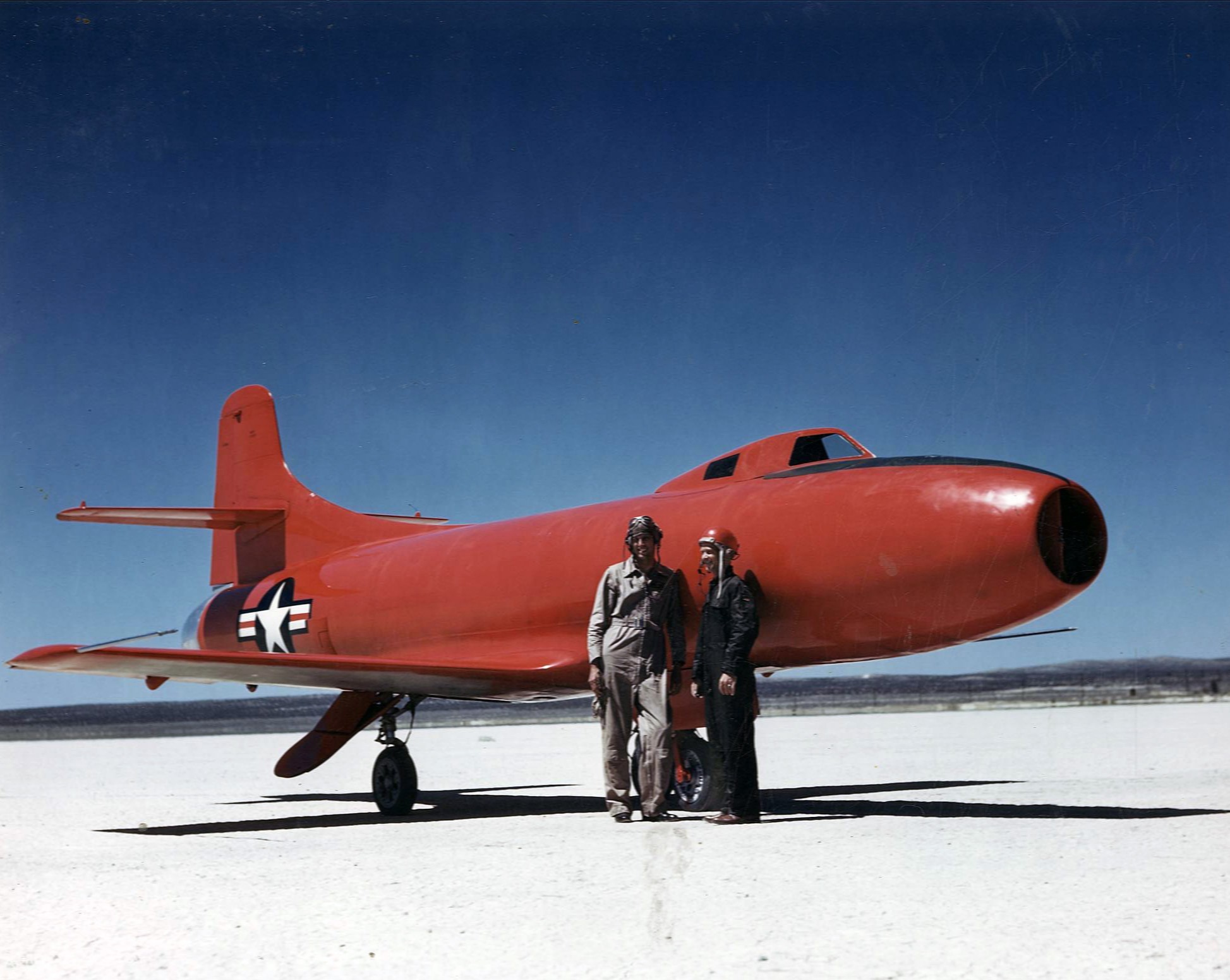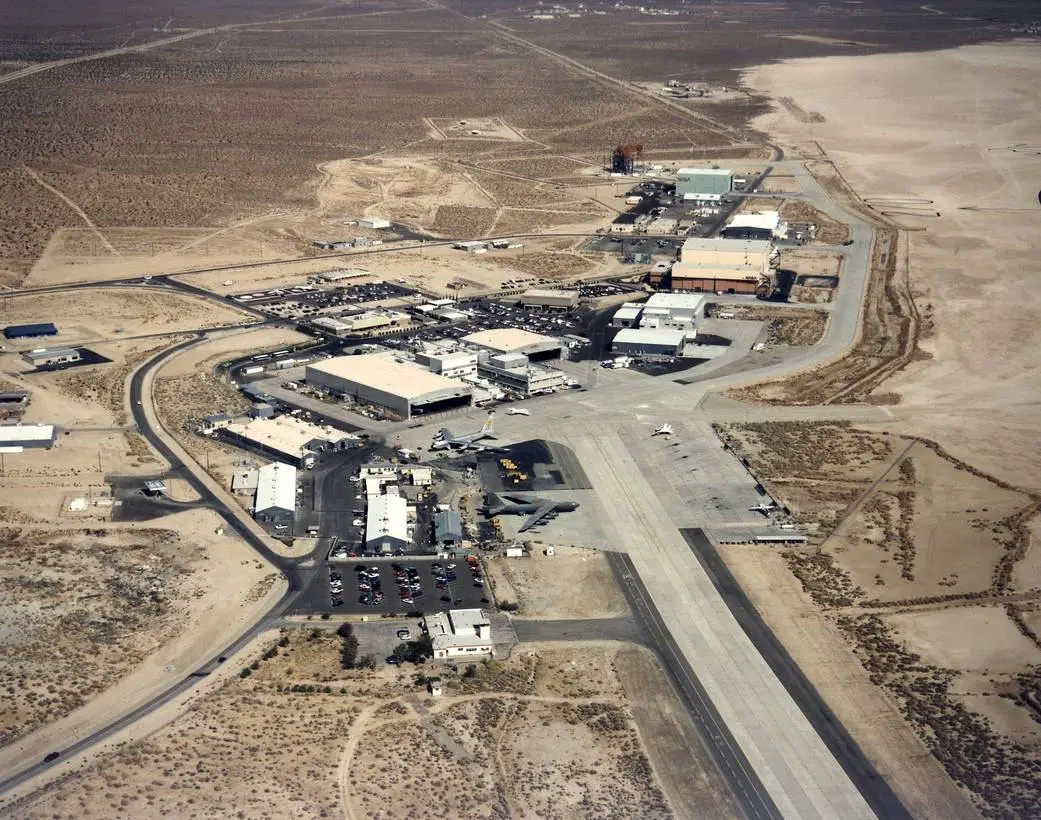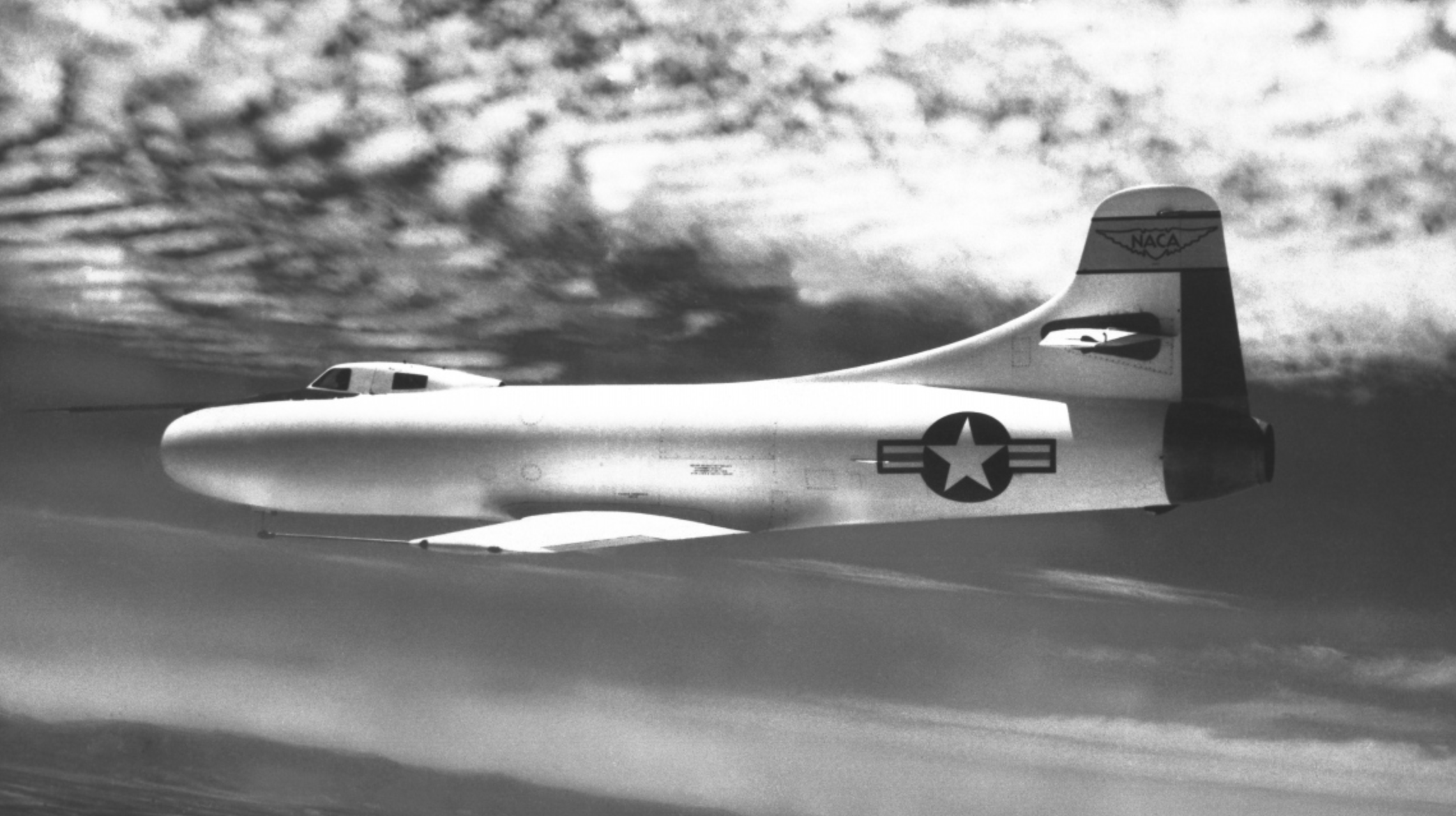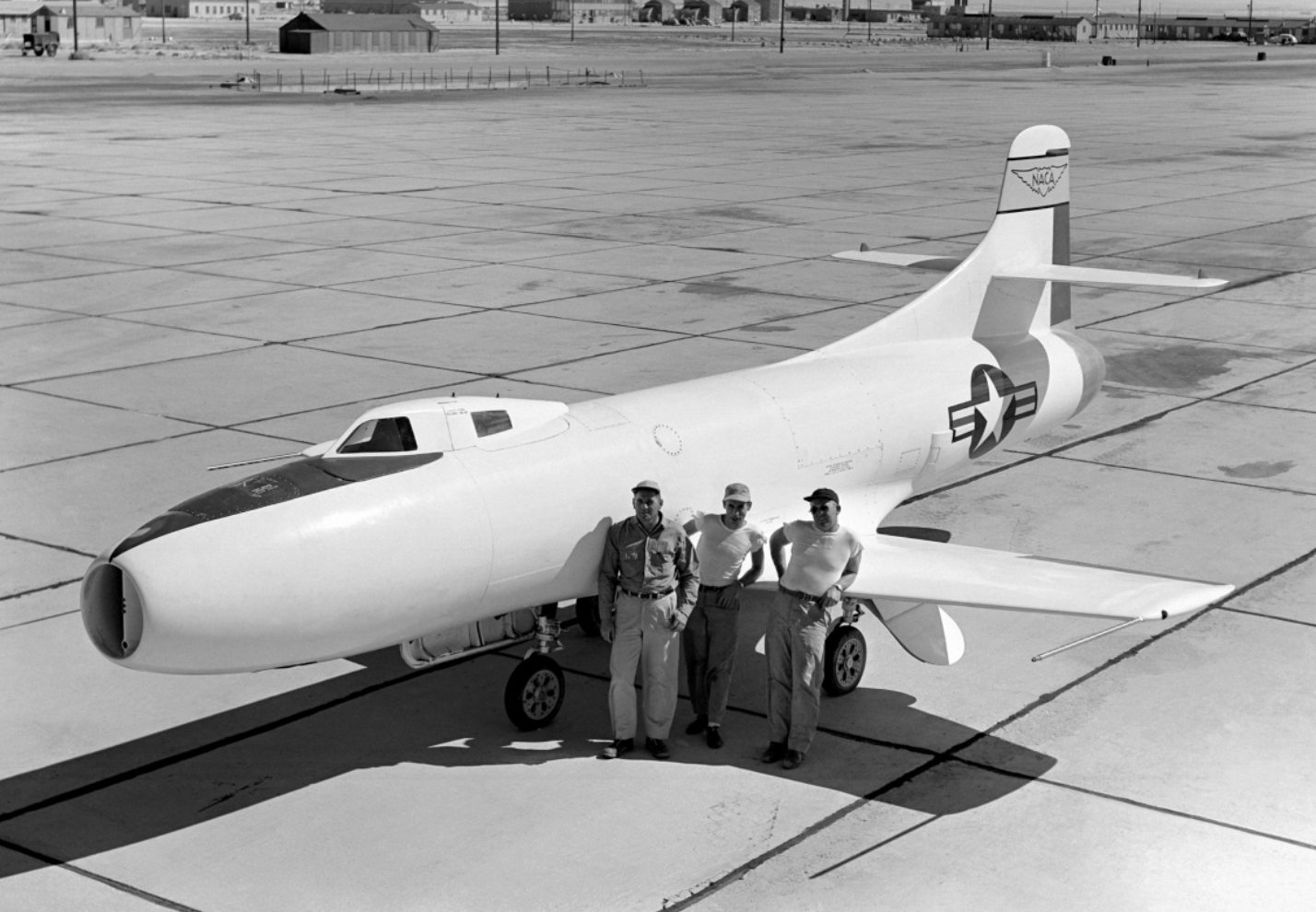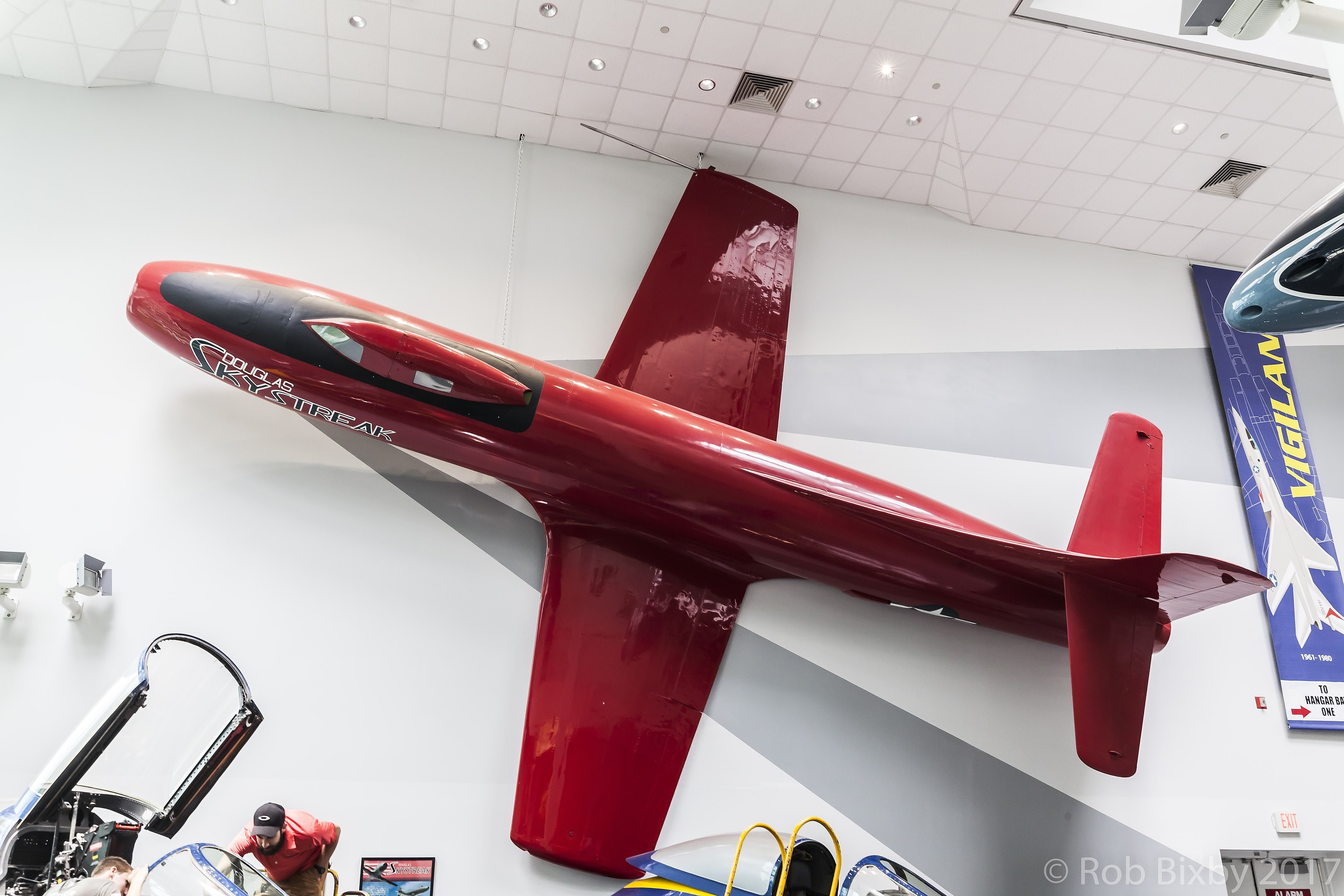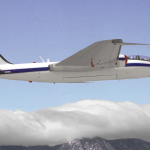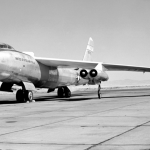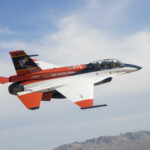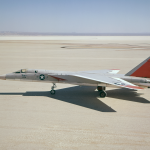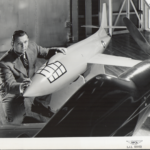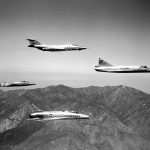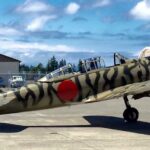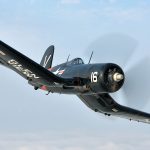The “Flight Test Files” series of articles explores the aircraft used by the Dryden Flight Research Center over the years in its pursuit of aeronautical advancements. Since the 1940s, the Dryden Flight Research Center in Edwards, CA, has built a unique and specialized capability for conducting flight research programs. This organization, composed of pilots, scientists, engineers, technicians, mechanics, and administrative professionals, has been and continues to be a leader in the field of advanced aeronautics. Located on the northwest edge of Rogers Dry Lake, the complex was originally centered around the administrative hangar building constructed in 1954. Over time, additional support and operational facilities have been added, including unique test facilities like the Thermalstructures Research Facility, Flow Visualization Facility, and Integrated Test Facility. One of the most notable structures is the space shuttle program’s Mate-Demate Device and hangar, located in Area A to the north of the main complex. The lakebed surface also features a Compass Rose, providing pilots with an instant compass heading. The Dryden complex originated at Edwards Air Force Base to support the X-1 supersonic flight program. As other high-speed aircraft entered research programs, the facility became permanent, expanding from a staff of five engineers in 1947 to nearly 1,100 full-time government and contractor employees by 2006.
Douglas D-558-I Skystreak
Conceived in 1945, the Douglas D-558-I Skystreak was a ground-breaking, transonic research aircraft designed for the U.S. Navy Bureau of Aeronautics in conjunction with the National Advisory Committee for Aeronautics (NACA). The Skystreak, unlike most American high-speed aerial research vehicles of the day, took off from the ground under its own power. Each had conventional straight wings and tails, with power coming from an Allison J35-A-11 turbojet engine producing some 5,000lbs of thrust. Only three of a planned-for six Skystreaks were completed. The type initially flew in a dramatic scarlet livery, leading to the nickname “crimson test tube.”
NACA later had their examples repainted in white to improve optical tracking and photography. The Skystreaks could carry a whopping 634 pounds of instrumentation and were ideal first-generation, transonic research aircraft – with complexity only where necessary.
The first Skystreak made its maiden flight on April 14, 1947 at Muroc Dry Lake (now known as Edwards Air Force Base). On August 20th, this aircraft set a new world speed record of 640.74 mph, with Commander Turner Caldwell (USN) at the controls. While the NACA took delivery of this Skystreak in April, 1949, they never actually flew the aircraft.
The NACA took delivery of the second Skystreak in November, 1947. She made 19 flights in their service until tragedy struck on May 3, 1948. The engine’s compressor disintegrated on takeoff and the ensuing crash took the life of NACA pilot Howard C. Lilly.
Douglas delivered the third Skystreak (BuNo.37872) to the NACA in 1949 after three Douglas test pilots and Howard Lilly had already flown it. The number three aircraft took over the planned flight program of the D-558-I #2. From the first flight in 1949 through 1953, the third Skystreak took part in an intensive flight-research program. Seven different NACA test pilots took part in this endeavor which garnered significant data on high-subsonic aircraft handling. In all, D-558-I #3 made 78 research flights with the NACA before they retired the aircraft on June 10, 1953.
Despite its valuable service, much of the Skystreak’s research, in the public’s mind at least, is overshadowed by the Bell XS-1 in which the legendary fighter ace and test pilot Chuck Yeager broke the sound barrier for the first time on October 14th, 1947 – although news of this feat didn’t make the headlines for several months due to the secrecy surrounding it. It must be remembered, though, that the Skystreak performed an important role in aeronautical research by its being able to fly for extended periods of time at transonic speeds; this freed up the X-1 to go for glory and finally break the sound barrier, albeit in brief sprints.
Of the three D-558-I’s built, two remain in preservation, these being Skystreak #1 (BuNo.37970) at the National Naval Aviation Museum in Pensacola, Florida and Skystreak #3 (BuNo.37972) at the Carolinas Aviation Museum in Charlotte, North Carolina.







